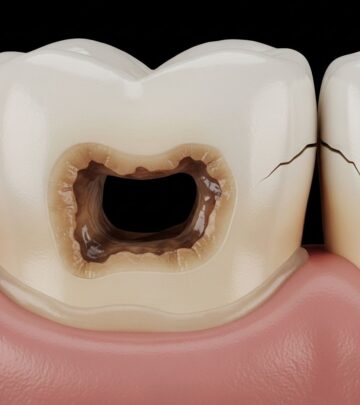Common Questions About Buprenorphine for Pain
Answers to the most frequent questions about buprenorphine, a medicine for moderate to severe pain relief, side effects, precautions and usage.

Buprenorphine is a strong opioid medicine prescribed to treat moderate to severe pain, especially when other painkillers are not effective. The following guide answers important questions patients and caregivers frequently have about buprenorphine, covering its use, safety, potential risks, dosage, and more.
What is Buprenorphine and What is it Used For?
Buprenorphine is a type of opioid analgesic, meaning it works by affecting the brain and nervous system to reduce the sensation of pain. Unlike some other opioids, buprenorphine can be prescribed in different forms and is intended for the management of moderate to severe pain that has not been controlled by less strong medicines.
- Commonly used for: Chronic (long-term) or persistent pain due to conditions like cancer or non-cancerous diseases.
- Forms prescribed: Transdermal patches, sublingual tablets, or injections, depending on individual need.
- Not used for: Mild pain or acute pain that is expected to resolve quickly.
How Does Buprenorphine Work?
Buprenorphine is a partial agonist at the opioid receptors, which means:
- It produces effects similar to those of other opioids (such as pain relief and feelings of well-being) but to a lesser extent.
- It has a ceiling effect—there is a maximum dose beyond which no additional benefit occurs for pain relief, helping to limit the risk of overdose.
- It binds strongly to opioid receptors, preventing or reducing the effects of other opioids (useful in treatment of opioid addiction, but also relevant in pain management).
Who Can and Cannot Take Buprenorphine?
Buprenorphine may be suitable for adults and teenagers (over a certain age, according to individual assessment), but is not always appropriate for everyone. It should only be started by a healthcare professional.
- May be suitable for: Adults with moderate or severe pain unresponsive to other painkillers, or in palliative care.
- Not recommended or used with caution in:
- Young children
- People with severe breathing problems (e.g. severe asthma, chronic obstructive pulmonary disease – COPD)
- Patients with severe liver impairment
- People with known allergies to buprenorphine or any patch ingredients
- Those with paralytic ileus (a type of bowel blockage)
How and When to Take or Use Buprenorphine
The way you take buprenorphine depends on the formulation prescribed.
- Patches:
- Apply to a flat, non-hairy, unbroken area of skin—often upper arm, chest, or back.
- Do not cut the patch. Each patch remains effective for different periods (sometimes 3-4 days, sometimes up to 7 days), depending on the dose and product type.
- Alternate the patch site each time you apply a new patch, leaving at least a week’s gap before reusing the same area.
- If a patch falls off, consult your doctor or a pharmacist for advice on what to do next.
- Sublingual Tablets:
- Place the tablet under the tongue and allow it to dissolve completely—do not swallow or chew.
- Usually taken once or several times a day as directed by your doctor.
- Injections:
- Given directly into a vein or muscle by a healthcare professional, typically in a hospital or clinic setting for short-term pain relief.
Always follow your doctor’s instructions on how to use this medicine. If you are unsure about any step, ask your prescribing doctor or pharmacist for clarification.
Dosage, Strength, and Adjustments
The dose of buprenorphine is individually tailored to each patient and depends on the reason for prescribing, the degree of pain, prior use of painkillers, response to the medicine, and presence of side effects.
- Patches: Available in different strengths, such as 5 micrograms, 10 micrograms, 15 micrograms, or 20 micrograms per hour over 7 days, or higher-dose patches intended to be changed every 3 or 4 days (35 micrograms, 52.5 micrograms, 70 micrograms per hour).
- Tablets: Commonly 200 or 400 micrograms per tablet, take as advised.
Your doctor might adjust your dose as needed to achieve adequate pain relief and minimize side effects. Never increase the dose on your own without medical advice.
What Should I Do if I Miss a Dose?
- Patches: If you forget to change your patch, change it as soon as you remember. Then continue with your usual schedule. Do not use two patches to make up for a missed one.
- Tablets: If it’s almost time for your next dose, skip the missed dose and take the next one at the usual time. Do not take two doses at the same time.
Important: If you have missed several doses, contact your doctor or pharmacist for advice as your dose may need recalculating.
What Happens if I Take Too Much?
Taking too much buprenorphine can be dangerous and may cause symptoms such as:
- Extreme drowsiness or loss of consciousness
- Difficulty breathing or shallow breathing
- Pinpoint pupils
- Slow heartbeat
If you or someone else has taken more than the prescribed dose or experiences these symptoms, seek medical attention immediately. Call emergency services or go to your nearest hospital.
Can Buprenorphine Become Addictive?
Buprenorphine is an opioid, and there is a potential addiction risk. However, when used under medical supervision for pain—especially in the form of patches and at doses prescribed—the risk of addiction is considered lower:
- Your doctor evaluates your risk for addiction before starting therapy and monitors you throughout treatment.
- Addiction is more likely with misuse (not following prescribed doses or routes), or in individuals with a history of substance misuse.
- If you are concerned about addiction, discuss your worries with your doctor—they can reassure you and address any issues.
What Are the Most Common Side Effects?
Like all medicines, buprenorphine can cause unwanted effects. Most people tolerate it well, but possible side effects include:
- Very common: Nausea, vomiting, constipation
- Common: Drowsiness, dizziness, itching or redness at the patch site, headache, dry mouth, difficulty sleeping
- Occasionally: Sweating, confusion, changes in mood, difficulty concentrating, breathing problems (rare but serious)
Tips to manage side effects:
- Drink plenty of water and eat high-fibre foods to help with constipation.
- Avoid driving or using heavy machinery if you feel dizzy or drowsy.
- Contact your doctor if you experience serious or persistent side effects, such as severe skin irritation, confusion, or breathing difficulties.
Are There Any Serious Risks or Rare Allergic Reactions?
- Serious breathing problems are rare at prescribed doses, but risk increases when combined with other sedatives (like benzodiazepines or alcohol).
- Allergic reactions (skin rash, swelling around the face or throat, difficulty breathing) are rare but require immediate medical attention.
Can Buprenorphine Interact With Other Medicines?
Yes, other medicines can interfere with how buprenorphine works or increase its side effects:
- Sedative medicines, sleeping pills, muscle relaxants, and some antidepressants can increase drowsiness, breathing difficulties, and the risk of overdose.
- Other opioid medicines may not work as intended if taken together with buprenorphine, due to its strong binding to opioid receptors.
- Medicines affecting liver enzymes (such as certain antifungal agents or antibiotics) may change buprenorphine levels in your body.
Always tell your doctor and pharmacist about all medicines and supplements you take before starting buprenorphine.
Can I Drink Alcohol While Taking Buprenorphine?
It is not recommended to drink alcohol while using buprenorphine, as alcohol can worsen side effects like drowsiness and breathing problems.
How Should I Dispose of Used Buprenorphine Patches or Leftover Medicine?
- Fold used patches with the sticky side inside and return to a pharmacy, or dispose of them safely according to local guidance, out of the reach of children and pets.
- Do not flush patches or unused medicines down the toilet or throw them in general waste without advice.
Other Advice and Precautions
- Do not apply patches to broken, red, or irritated skin.
- Do not expose patches to direct heat or sunlight for prolonged periods—it may cause more medicine to be absorbed at once.
- If your pain is not controlled, or you wish to stop the medication, do not make any changes without consulting your doctor first.
- Let all healthcare providers know you are using buprenorphine, especially if you need surgery or dental procedures.
Frequently Asked Questions (FAQs) About Buprenorphine
How quickly does buprenorphine start working?
Tablets and injections usually work within an hour; patches may take up to a day to reach full effect after the first application, but levels remain stable while using them regularly.
Can I stop using buprenorphine suddenly?
Do not stop suddenly, as this can cause withdrawal symptoms. Your doctor will guide you in gradually reducing the dose if needed.
Can buprenorphine be used in palliative care?
Yes. Patches and other forms are often used to manage pain in patients receiving palliative (end-of-life) care, with regular monitoring by healthcare staff.
What if my patch falls off early?
Contact your pharmacist or doctor for advice. Do not apply a new patch without medical instruction, as this could result in too high a dose.
Is there a risk to children or pets from used patches?
Yes. Used and unused patches may still contain enough medicine to be dangerous. Always dispose responsibly and keep patches out of sight and reach.
Will I have regular check-ups while using buprenorphine?
Yes, your healthcare team will review your treatment regularly, checking pain control, side effects, and signs of any problems.
Summary Table: Key Points About Buprenorphine for Pain
| Aspect | Details |
|---|---|
| Purpose | Moderate to severe pain not controlled by weaker painkillers |
| Forms | Patch (slow-release), sublingual tablet, injection (short-term use) |
| Typical Side Effects | Nausea, constipation, itching, dizziness, drowsiness |
| Addiction Risk | Low when prescribed for pain; higher if misused or with history of addiction |
| Missed Dose | Take as soon as remembered or ask your doctor; do not double up doses |
| Interactions | Other sedatives, opioid medicines, drugs affecting liver enzymes |
| Alcohol Advice | Avoid alcohol to reduce risk of dangerous side effects |
This guide is designed to provide general information about buprenorphine for pain relief. Always follow the specific advice of your prescribing healthcare professional. If you ever have concerns or questions about your treatment, speak to your doctor or pharmacist for personal guidance.
Read full bio of Sneha Tete












